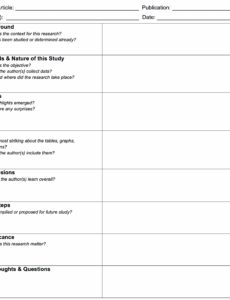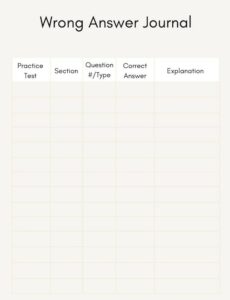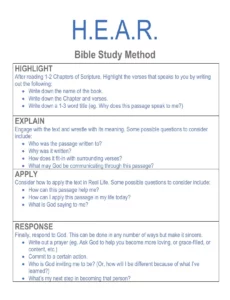Embarking on an elimination diet can feel like stepping into a new world of eating, designed to help you uncover potential food sensitivities or intolerances that might be contributing to various health issues. This journey, while incredibly insightful, requires a keen eye and a methodical approach. It is not simply about removing certain foods; it is about observing your body’s reactions in their absence and then during their careful reintroduction.
To truly make the most of this investigative process, a systematic way to track your intake and symptoms is absolutely essential. Without a clear record, the subtle changes in your body might go unnoticed, making it difficult to pinpoint specific triggers. This is where an effective tracking tool becomes your most valuable companion, helping you piece together the puzzle of your unique health landscape.
Why a Food Journal is Your Best Friend During an Elimination Diet
When you are following an elimination diet, your goal is to identify foods that cause adverse reactions. This is far more complex than just remembering what you ate yesterday. Our bodies can react in myriad ways, from digestive upset and skin issues to fatigue and mood changes, and these reactions might not always be immediate. A comprehensive food journal allows you to connect the dots between the foods you consume and the physical or emotional symptoms you experience, often revealing patterns that would otherwise remain hidden.
Think of your food journal as your personal health detective. It provides objective data, removing the guesswork and emotional bias that can often cloud our perception of how certain foods affect us. This detailed record becomes an invaluable resource not only for your own understanding but also for any healthcare professionals you might be working with, giving them a clear picture of your dietary habits and symptom progression. It empowers you to become an active participant in your healing journey.
Moreover, the act of regular journaling encourages mindfulness around your eating habits. It makes you pause and consider what you are putting into your body, how you feel before and after meals, and any changes that occur throughout the day. This heightened awareness is a powerful tool for self-discovery and can extend beyond the duration of your elimination diet, fostering a healthier relationship with food in the long term.

A well-structured elimination diet food journal template ensures you capture all the necessary information, making the analysis phase much smoother and more accurate. It goes beyond just listing ingredients and prompts you to consider the context of your meals and your overall well-being.
Key Information to Track Daily
- Date and Time of Meals and Snacks
- Specific Foods and Ingredients Consumed
- Preparation Methods of Your Meals
- Portion Sizes
- Symptoms Experienced (digestive issues, headaches, skin rashes, fatigue, etc.)
- Severity and Duration of Each Symptom
- Mood and Energy Levels
- Stress Levels
- Medications and Supplements Taken
- Sleep Quality and Hours Slept
- Hydration Intake
Creating and Using Your Elimination Diet Food Journal Template
Designing your elimination diet food journal template can be a personalized process. Some people prefer a digital format, using apps or spreadsheets on their phone or computer, while others find comfort in a physical notebook. There are many printable templates available online that you can adapt, or you might choose to create your own from scratch, tailoring it precisely to your needs and the symptoms you are hoping to track. The most important aspect is that it is easy for you to use consistently every single day.
Once you have your template ready, the key is to start using it immediately and religiously. Do not wait for symptoms to appear before you begin recording. Documenting your baseline health and what you eat during the initial elimination phase is just as crucial as tracking reactions during reintroduction. Be as specific as possible with your food entries. Instead of just “chicken and vegetables,” write down “grilled chicken breast with steamed broccoli and carrots, seasoned with salt and pepper.”
Regularly reviewing your journal is where the magic happens. Set aside time each week, or even daily, to look over your entries. Are there any patterns emerging? Do certain foods consistently precede a flare-up of symptoms? Do you feel better on days when you prioritize sleep or manage stress more effectively? These insights are gold and will guide you as you progress through the diet, helping you make informed decisions about which foods to reintroduce and which might be problematic for your system.
Utilizing a comprehensive elimination diet food journal template will empower you throughout the entire process, not just during the initial elimination phase. It provides a structured way to observe your body’s responses during reintroduction, allowing you to isolate potential trigger foods with greater confidence. This objective data is invaluable for long-term dietary planning and maintaining a sense of control over your health.
Tips for Effective Journaling
- Be Consistent: Fill out your journal at least three times a day, ideally after each meal, to capture immediate reactions.
- Be Specific: Detail ingredients, cooking methods, and portion sizes.
- Note Everything: Do not forget drinks, snacks, supplements, and even emotional states.
- Review Regularly: Look for connections and patterns between your food intake and your symptoms.
Taking charge of your health through an elimination diet is a proactive and empowering step, and a well-maintained food journal is undoubtedly the cornerstone of this investigative journey. It transforms a potentially overwhelming process into a clear, structured path towards better understanding your body and its unique needs. By meticulously documenting your experiences, you are building a comprehensive map that guides you to a more vibrant and comfortable way of living.
So, as you prepare to embark on this path of discovery, remember the profound impact a structured tracking system can have. Investing your time and effort into creating and consistently using a detailed elimination diet food journal template will not only accelerate your progress but also provide you with invaluable insights that contribute to your long-term well-being and a clearer understanding of your dietary triggers.





